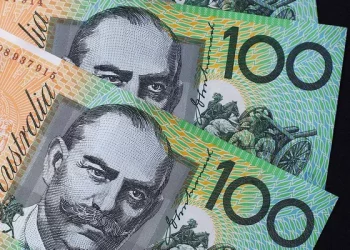The Korean won (KRW) is the official currency of South Korea and a pivotal currency in Asia, especially in international trade and foreign exchange markets. Its denomination structure and use make it both practical for daily transactions and an intriguing subject for financial analysis. This article dives deep into the smallest denomination of the Korean won, exploring its historical evolution, significance, and implications in broader financial contexts.
The Korean Won: A Brief Overview
The won is symbolized as “₩” and its ISO currency code is KRW. As of today, the Bank of Korea (BOK) oversees the issuance of the Korean won, ensuring its stability and regulating its denominations. South Korea’s economic rise has been reflected in the strength and utility of its currency.
Historically, the won was introduced in 1902, replacing the Korean yang. Over the years, it has undergone several transformations due to geopolitical events, including the Japanese occupation, the Korean War, and subsequent economic reforms. The modern won, introduced in 1962, has evolved to meet the needs of a rapidly growing and industrialized economy.
Denominations of the Korean Won
The won exists in two primary forms: coins and banknotes. Each has its unique role in South Korea’s economy.
Banknotes
The most common denominations of Korean banknotes are ₩1,000, ₩5,000, ₩10,000, and ₩50,000. These notes are widely used for everyday transactions, with the ₩50,000 note being the highest denomination.
Coins
Coins are issued in denominations of ₩1, ₩5, ₩10, ₩50, ₩100, and ₩500. These coins play a critical role in small-scale transactions and provide essential change for cash-based purchases.
What is the Smallest Korean Won?
The smallest Korean won in circulation is the ₩1 coin. This coin is significant not only for its practical utility but also for its symbolic importance in maintaining price granularity in South Korea.
The ₩1 Coin
The ₩1 coin is made of aluminum and features a simple yet elegant design. On the front side, it bears an image of the “Rose of Sharon” (Hibiscus syriacus), South Korea’s national flower, along with the year of minting. The reverse side showcases the denomination “1” and the phrase “Bank of Korea” in Korean script.
Despite its low value, the ₩1 coin is still in circulation. Its presence ensures that South Korea can handle even the smallest monetary transactions without rounding errors, a practice that aligns with the country’s meticulous economic structure.
The Role of the ₩1 in Daily Transactions
In practice, the ₩1 coin is rarely used in physical exchanges. Most South Koreans prefer digital payments, which allow for precise accounting without the need for small denominations. However, the ₩1 remains relevant in several contexts:
Pricing Precision
Retailers often price goods in exact figures, such as ₩1,001 or ₩9,999. While these prices might seem minor, the psychological pricing strategy aims to make items appear cheaper. Such prices necessitate the existence of ₩1 coins to ensure exact change.
Electronic Transactions
In digital or card-based transactions, denominations as small as ₩1 can still be accounted for, even if the physical coin is not exchanged. This highlights the importance of maintaining the denomination in currency systems.
Banking and Financial Records
Precise financial records often require calculations down to the smallest unit, making the ₩1 crucial for accounting and bookkeeping.
Historical Context of the Smallest Denomination
The value of the smallest Korean won has shifted over time. Inflation and changes in economic conditions have impacted the buying power of the ₩1 coin.
The Impact of Inflation
Inflation has gradually reduced the purchasing power of the ₩1. In the early 1960s, when the modern won was reintroduced, ₩1 had more significant value. Today, however, its practical use is limited to providing exact change.
Phasing Out Small Denominations Globally
Globally, many currencies have phased out their smallest denominations due to inflation. For instance, the United States has considered eliminating the penny, and Canada officially discontinued it in 2013. However, South Korea has retained the ₩1 coin, reflecting its emphasis on precise financial systems.
Implications for Foreign Exchange Traders
Understanding the smallest denomination of the Korean won is not just a matter of curiosity; it has real implications for foreign exchange traders. Here’s why:
Exchange Rate Precision
When trading the KRW, small denominations like the ₩1 impact the granularity of exchange rates. Precise calculations are essential in high-frequency trading, where even minute differences can influence profitability.
Economic Indicators
The retention or phasing out of small denominations often reflects a country’s inflation trends and economic health. For traders, this can signal broader macroeconomic conditions affecting the KRW.
Psychological Factors in Pricing
Psychological pricing strategies tied to small denominations can influence consumer behavior, ultimately affecting economic activity. Foreign exchange traders monitor such trends to gauge demand for the KRW.
Conclusion
The ₩1 coin, the smallest denomination of the Korean won, represents much more than its face value. It reflects South Korea’s meticulous approach to its economy and its dedication to maintaining precision in financial systems. While its practical use may be limited in an increasingly digital society, the ₩1 remains a vital unit in both physical and electronic transactions.
For foreign exchange traders, understanding the smallest Korean won offers insights into South Korea’s economic structure, inflation trends, and currency dynamics. As the global economy evolves, the role of such small denominations will continue to intrigue economists, policymakers, and traders alike. Whether the ₩1 coin persists or becomes a relic of the past, its legacy as a cornerstone of South Korea’s monetary system is secure.
Related Topics:




























